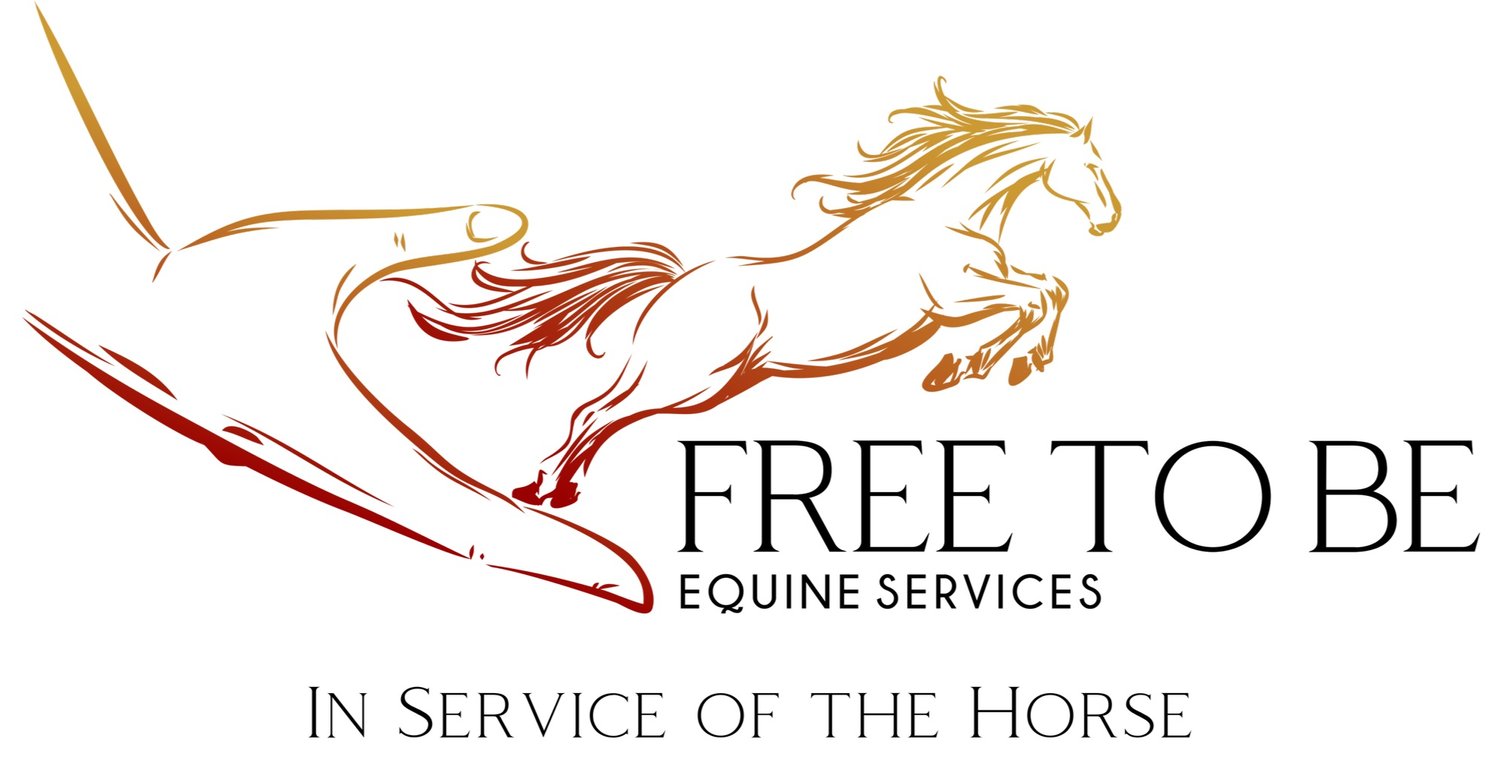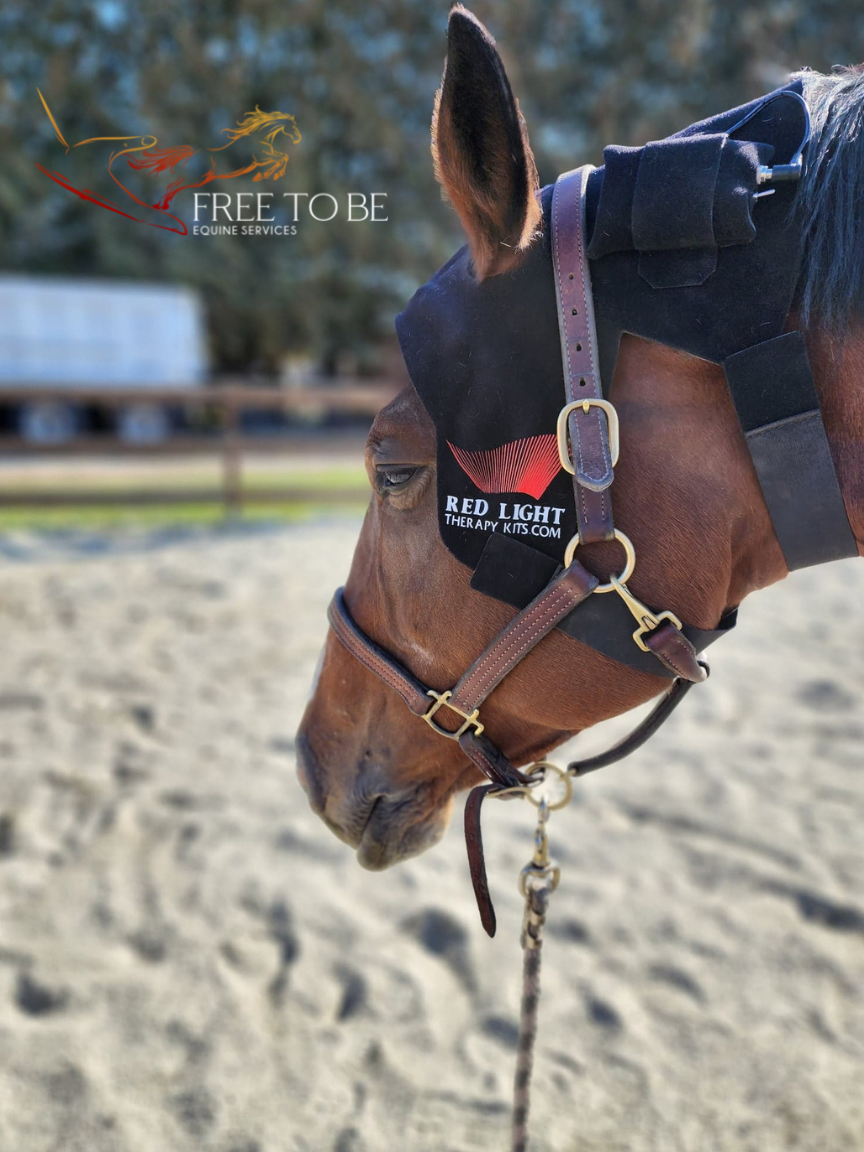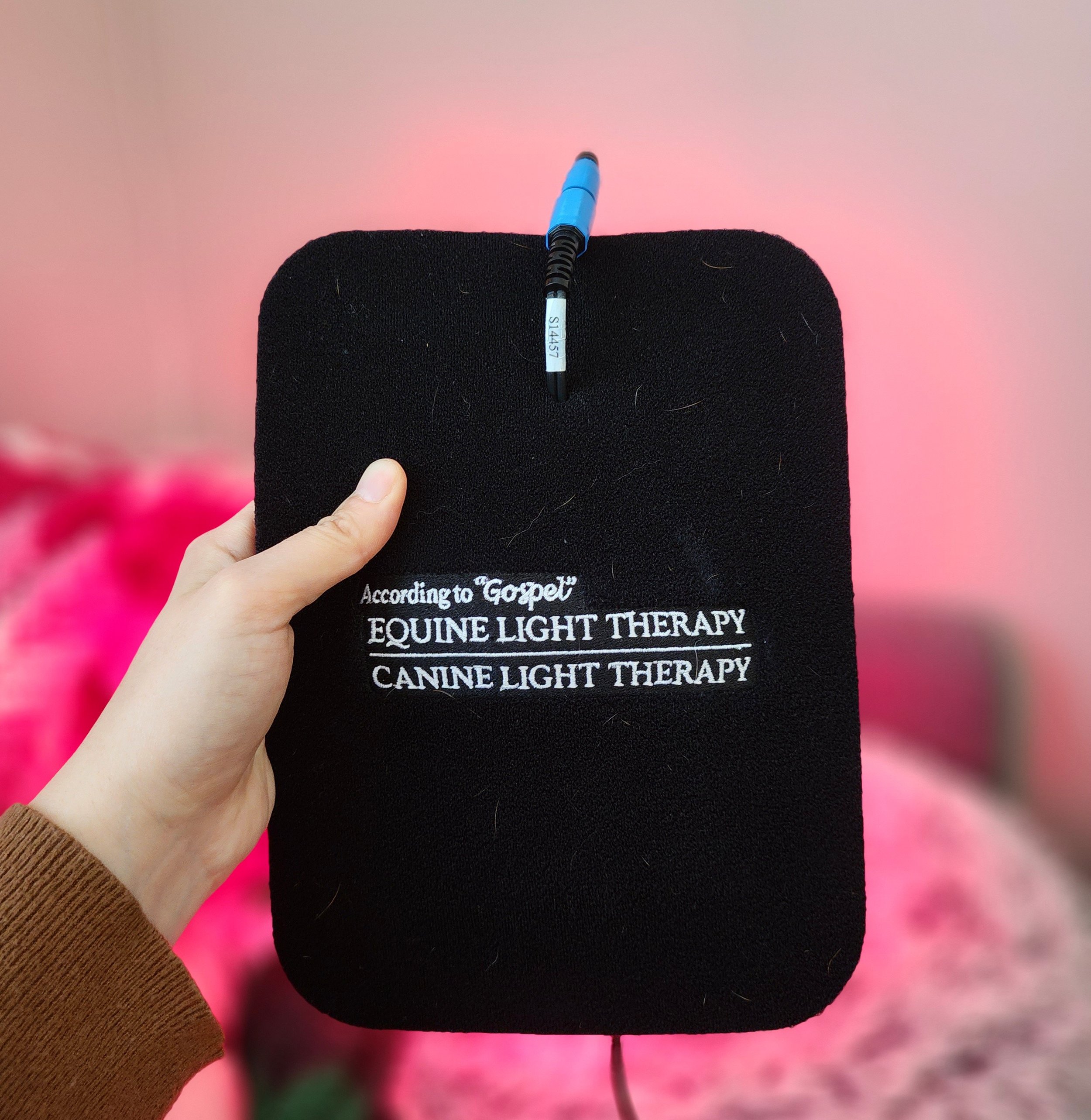As your horse’s steward, it is important for you to ask questions and understand what therapeutic modalities are being used with your horse and why! Here are my answers to the most common questions about red light therapy for horses. Please let me know if you have additional questions and I will answer them, or direct you to other resources (there is also a list of references at the end of this blog post).
1. What does it do, and what are the benefits?
Light therapy - also called photobiomodulation, photonic therapy, or low-level laser therapy - is a therapeutic modality that uses specific wavelengths of visible red and near-infrared (NIR) light to penetrate the skin and layers of tissue beneath it such as connective tissue, muscle, nerves, joints, and bone.
A combination of red and NIR light at specific wavelengths is widely considered the “therapeutic window” when utilizing light therapy devices. Red and NIR wavelengths together have been proven to stimulate biological processes in the body such as increased energy production within the cells, increased collagen and elastin production, increased circulation, reduced inflammation, increased lymphatic system activity, stimulation of acupressure points, and more. Red light therapy also releases endorphins, which in turn reduces nerve excitability, relaxes muscles, and relieves stress.
2. How does it work?
Red light and NIR light at specific wavelengths can directly affect and improve cellular function. Red light penetrates the skin, allowing photons to be absorbed by the cells within and converted to energy. This energy then stimulates production of collagen, elastin, and ATP. There is a lot more to this biological process, but for the sake of this FAQ, I have kept it simple!
Increased production of essential proteins aid in the repair of damaged tissue. Red light increases oxygenation, improves circulation, increases activity of the lymphatic system, and aids in the removal of metabolic waste.
Red light at specific wavelengths (630-700nm or “nanometers”) penetrates tissue to a depth of about 10mm. Light at this wavelength is very beneficial for treating issues close to the surface of the body such as wounds, scars, and acupressure and trigger points. Near-infrared light at wavelengths of 800-1000nm penetrates to a depth of about 50mm which makes it effective for accessing the deeper structures such as muscle, connective tissues like tendons, ligaments, and fascia, joints, and even bones and organs. Red light and NIR light when used together work synergistically to stimulate all of these tissues, from skin cells to down to bone tissue.
A fascinating development in human medical research shows that NIR wavelengths can penetrate the skull and brain tissue, which could allow for the effective treatment of neurological disorders and brain injuries. The research in this area is new and limited, but is an exciting prospect!
In humans, red light therapy is often utilized to treat skin conditions and infections, as well as improve the overall quality and texture of the skin.
Further study on photobiomodulation is needed to fully understand the process of how it works and what ways we can best utilize its therapeutic effects. I’m excited to see how our understanding of this therapeutic modality continues to grow and expand with the latest research.
3. How do you use red light therapy in your sessions?
I use red light therapy to aid the horse’s body in its natural processes of healing, release tension, and bring relaxation to the horses that I see in my sessions. It is meant as a tool to support my hands-on modalities. I currently use two devices - a handheld red/infrared light device, and a red/infrared light therapy poll cap.
The cap is proving to be helpful for a variety of situations. It reduces discomfort in horses with sensitivity in their poll or TMJ, allowing me to then work manually with their neck and cranium. If used after cranial work, it helps to integrate the positive changes while keeping the tissues warm and happy. Horses relax and drop into their parasympathetic nervous system, or “rest and digest” state, where natural healing occurs. The shape of the cap allows it to be used on other areas of the body when needed, like over the lumbar or sacrum, or wrapped around a limb. I chose this particular product for its available wavelengths of light, as well as its coverage of key areas of the horse’s head (particularly the TMJ, masseter and temporalis muscles, occiput, and atlas or C1).
The handheld light therapy device delivers red and near-infrared light in a therapeutic window that is highly effective and quick to use. It is incredibly helpful to address all of the areas of the body that have been challenging to fit to a pad. It also allows for a much faster application, perfect for horses who don't love standing around with a red light pad attached to them! Although I swear some horses wish they could have the poll cap on permanently.
The handheld device has proven useful for muscle spasms and trigger points, joint pain, myofascial pain, and soft tissue issues like muscle strains and tendon/ligament injury (once diagnosed by the vet).
4. What do I need to do to prepare my horse for red light therapy?
No access to electricity is needed - my red lights run off of a rechargeable battery.
A clean horse is always helpful for any modality, whether it be hands-on or a tool like kinesiology tape or red light. It is more pleasant for the horse, makes these tools more effective and longer lasting, and protects my equipment.
A “head shy” horse may be experiencing pain or remembered pain surrounding their head, and they may not be receptive to the poll cap right away. It is of utmost importance to read the behaviour of the horse and help them to become comfortable before putting on the cap. Using the red light in other areas of the body where the horse feels more relaxed is a great way to introduce them to red light therapy. That being said, once the horse is comfortable with the cap, it is extremely soothing for those horses who cannot tolerate a lot of “hands on” touch to their head.
5. What are the considerations and contraindications for red light therapy?
There are no known side effects to using red light therapy and it is considered extremely non-invasive. The wavelengths of red/NIR light utilized in my sessions are safe for even long term use. It is NOT the same light as UV rays from the sun or tanning beds and there is no increased risk of cancer or UV damage from this type of light. Unlike LASER (an acronym which means “light amplification by stimulated emission of radiation”), there is no increased risk to your eyes and therefore goggles are not needed. However, with ANY light it is not recommended to look directly into it, especially for a prolonged period of time.
As with any therapeutic modality that I offer, if your horse is ill or injured, you must reach out to your veterinarian for diagnosis and treatment. I am not a veterinarian and cannot provide these essential services.
6. What is the cost?
At this time, use of the red light therapy devices is included in my equine therapy session fees. This is subject to change as my education and therapeutic offerings continue to expand.
Canine red light therapy sessions available upon request.
Dogs love red light therapy too! If you have a dog in your life who suffers from joint pain, mobility issues, or soft tissue tension, reach out to discuss how red light therapy could help.
7. Can I buy my own red light therapy device?
Contact me anytime if you are interested in trying red light therapy for your horses!
Red light therapy is extremely safe and effective to use at home with your own animals. My knowledge of red light therapy so far has been gained through extensive reading of research and resources. Through this knowledge and my experience with various red light devices, I have teamed up with According to Gospel Equine and Canine Light Therapy - myself, my own dogs, and my equine clients have been extremely satisfied with their products. You can purchase them through my affiliate link HERE!
Remember: If you have any doubts or concerns about using red light therapy with your animals, or if they have any pre-existing injuries or illnesses, please check with your veterinarian first.
KAITI ELLIOTT
CERTIFIED EQUINE CRANIOSACRAL THERAPIST
CERTIFIED EQUINE PERFORMANCE THERAPIST
CERTIFIED EQUI-TAPE PRACTITIONER
CERTIFIED EQUINE ASSISTED PERSONAL DEVELOPMENT COACH
VANCOUVER ISLAND, BC
REFERENCES
https://www.redlighttherapy.com.au/research/
https://www.ncbi.nlm.nih.gov/pmc/articles/PMC5066074/
https://www.ncbi.nlm.nih.gov/pmc/articles/PMC5523874/
https://platinumtherapylights.com/en-ca/blogs/news/red-light-therapy-research
https://www.byrdie.com/red-light-therapy-5112808
https://platinumtherapylights.com/en-ca/blogs/news/red-vs-infrared-and-nir-light-therapy







